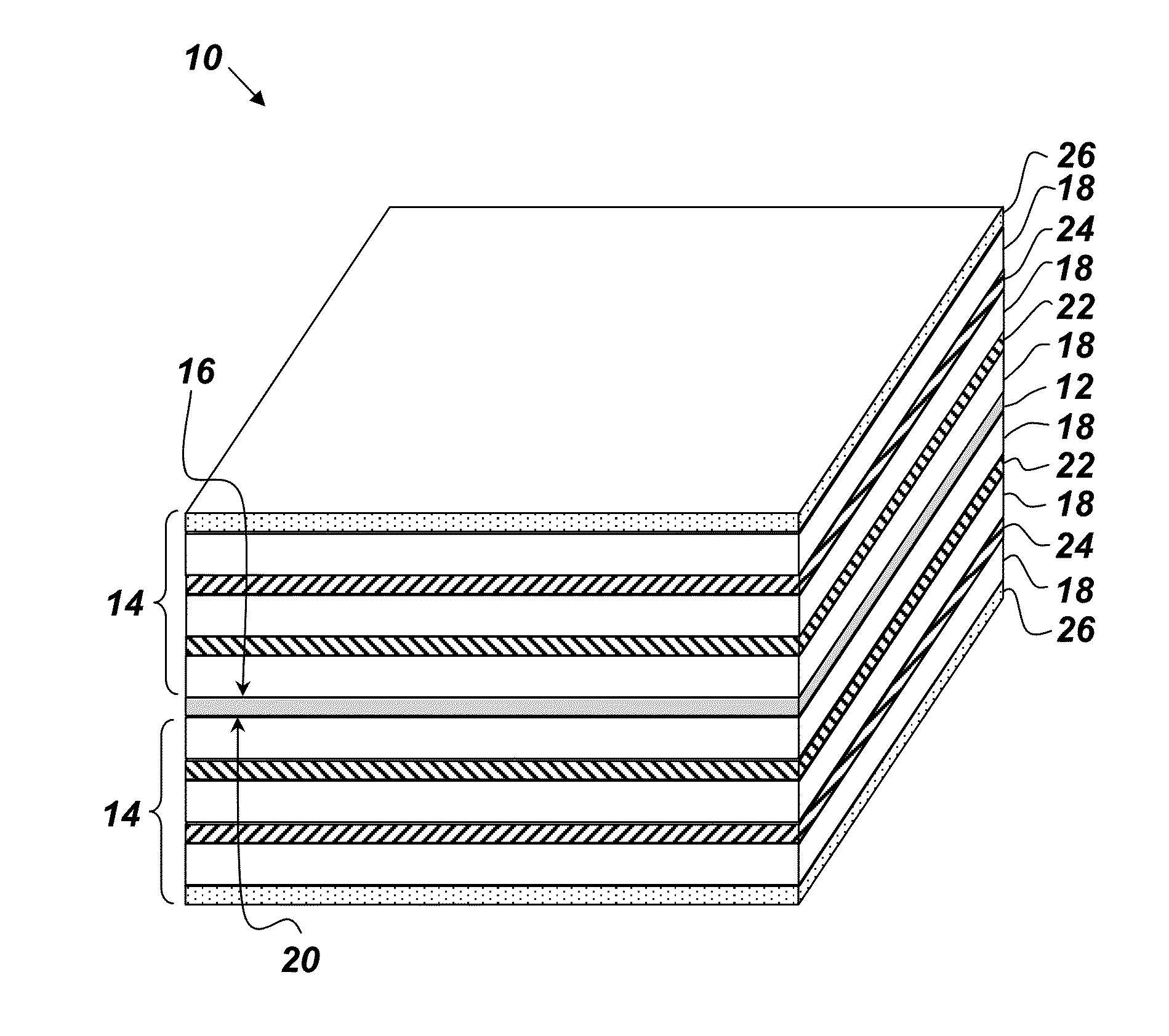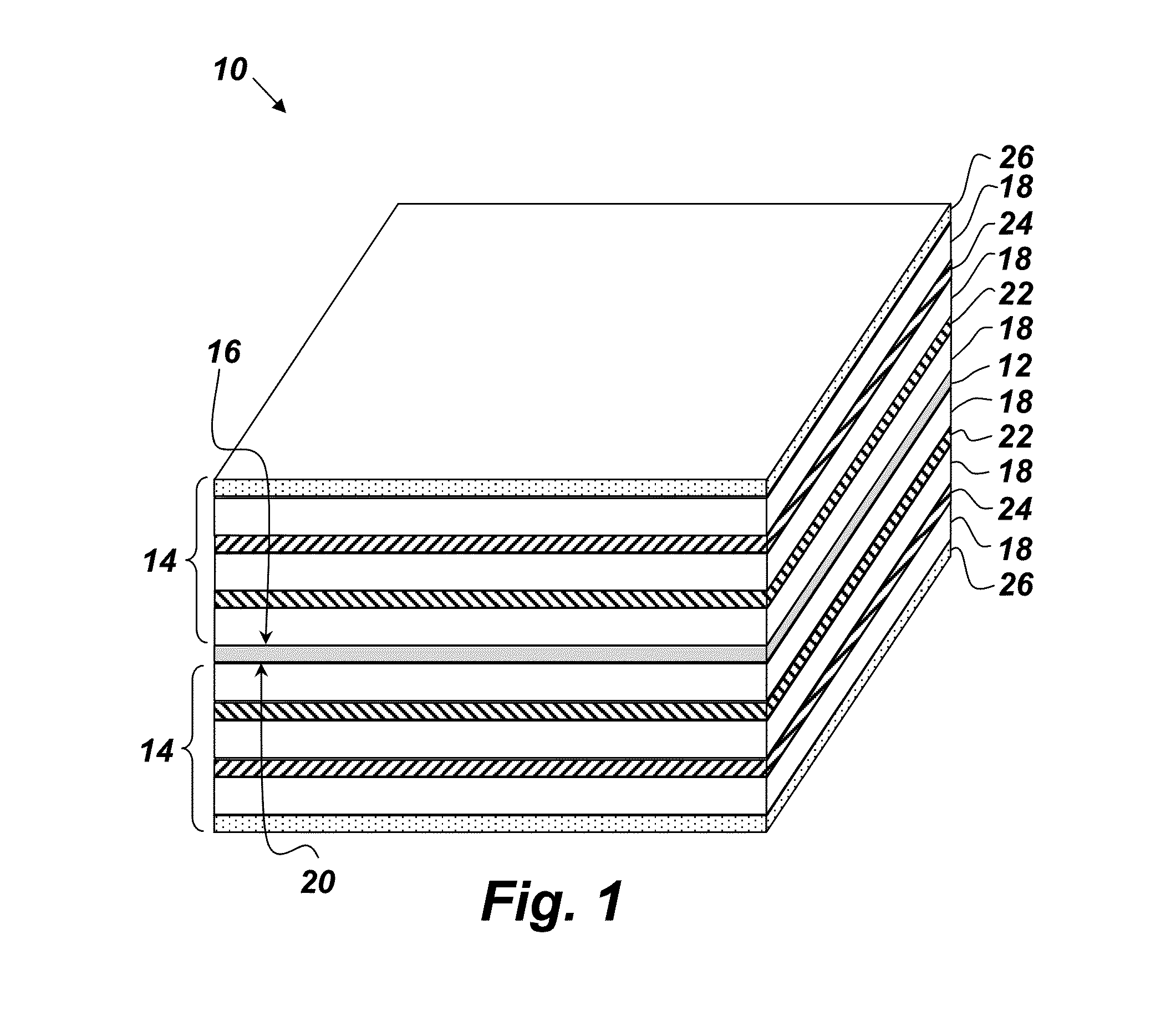Radioisotope-powered energy source
a radioisotope and energy source technology, applied in radiation electrical energy, radiation applications, nuclear engineering, etc., can solve the problems of chemical battery size and load, sometimes associated with microelectronic devices, not always compatible with chemical batteries,
- Summary
- Abstract
- Description
- Claims
- Application Information
AI Technical Summary
Benefits of technology
Problems solved by technology
Method used
Image
Examples
Embodiment Construction
[0013]FIG. 1 depicts an embodiment of a radioisotope-powered energy source 10, which comprises a radioisotope-coated flexible center substrate 12, and two substantially identical sequences of layers 14. One sequence 14 is bonded to an upper surface 16 of the center substrate 12 via an electrically insulating mesh barrier 18. The other sequence 14 is bonded to a lower surface 20 via another electrically insulating mesh barrier 18. All of the constituent layers of each sequence 14 are also bonded to each other via electrically insulating mesh barriers 18. Each sequence 14 comprises the following layers bonded together in the following order: a first low-density alpha particle impact layer 22, a first high-density beta particle impact layer 24, and a photovoltaic layer 26.
[0014]The center substrate 12 may be made of any thin flexible material that is capable of carrying a layer of the radioisotope with minimal self-absorption of the emitted alpha particulates. A suitable example of the...
PUM
 Login to View More
Login to View More Abstract
Description
Claims
Application Information
 Login to View More
Login to View More - R&D
- Intellectual Property
- Life Sciences
- Materials
- Tech Scout
- Unparalleled Data Quality
- Higher Quality Content
- 60% Fewer Hallucinations
Browse by: Latest US Patents, China's latest patents, Technical Efficacy Thesaurus, Application Domain, Technology Topic, Popular Technical Reports.
© 2025 PatSnap. All rights reserved.Legal|Privacy policy|Modern Slavery Act Transparency Statement|Sitemap|About US| Contact US: help@patsnap.com



